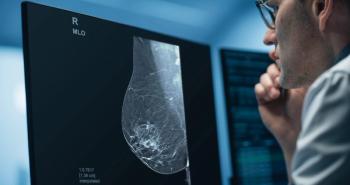
Report from SCAR: Lively vendor panel concludes marathon digital mammography forum
The final 30 minutes of the Society for Computer Applications in Radiology’s marathon five-hour digital breast imaging forum was allotted to a manufacturers’ panel discussion. Representatives from more than 15 manufacturers fielded questions from the audience.
The final 30 minutes of the Society for Computer Applications in Radiology's marathon five-hour digital breast imaging forum was allotted to a manufacturers' panel discussion. Representatives from more than 15 manufacturers fielded questions from the audience.
None of the vendor reps wore hard hats, although the instinct to duck and cover may have been prominent, particularly during the barrage of questions from the audience of digital mammography readers. Users expressed concern that the entire field of digital mammography may not survive if the technology does not improve rapidly.
One audience member disputed a statement made earlier in the session that there are 1328 issues in digital mammography. There are actually only four or five, he said, among them window leveling and integrity of images.
"Those are the readers' issues," he said. "I think [manufacturers] are copping out. Is this too hard?"
Another user responded to the possibility that developing mammography technologies could further inhibit workflow.
"I can't be made to work slower. We're already short-handed. We're not given the staff to keep up with reading demands. We're denied residents and fellows. I read 90 studies a day as it is. I would be there all night if workflow slows any further. We need a solution and we need it now," he said.
An IHE-like mammography-specific miniconnectathon was mentioned as one means to inspire more cooperation in vendors. The suggestion provoked a round of applause in the room.
Moderator J. Anthony Siebert, Ph.D., a professor of radiology at the University of California, Davis, concluded the session by affirming the absolute need to streamline the entire digital mammography workflow process. Reducing the amount of manipulation of images required to improve efficiency of interpretation would be one way to achieve that goal, he said.
"This is essential if digital mammography is going to be accepted," Siebert said.
Other issues include better control of hanging protocols to avoid wasting time and ensuring that the initial image the system presents is one that the radiologist can do most of the work with, he said.
The ability to digitize and present priors on the digital workstation would eliminate the problem of a viewbox casting light on a monitor, Siebert said.
"And, of course, all radiologists reading mammograms should wear dark clothing," he said.
For more stories from the Society for Computer Applications in Radiology meeting, go to the
Newsletter
Stay at the forefront of radiology with the Diagnostic Imaging newsletter, delivering the latest news, clinical insights, and imaging advancements for today’s radiologists.




























